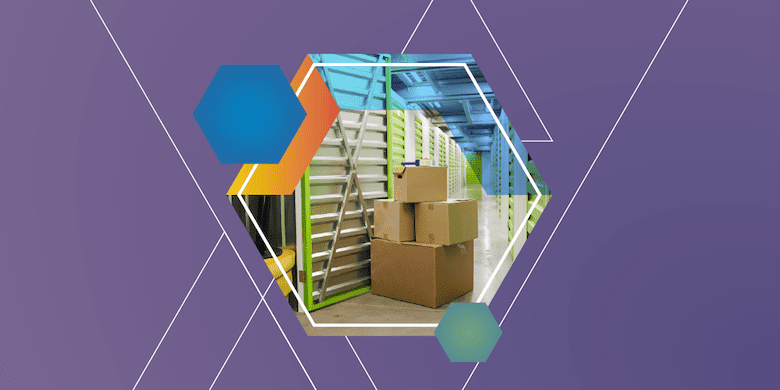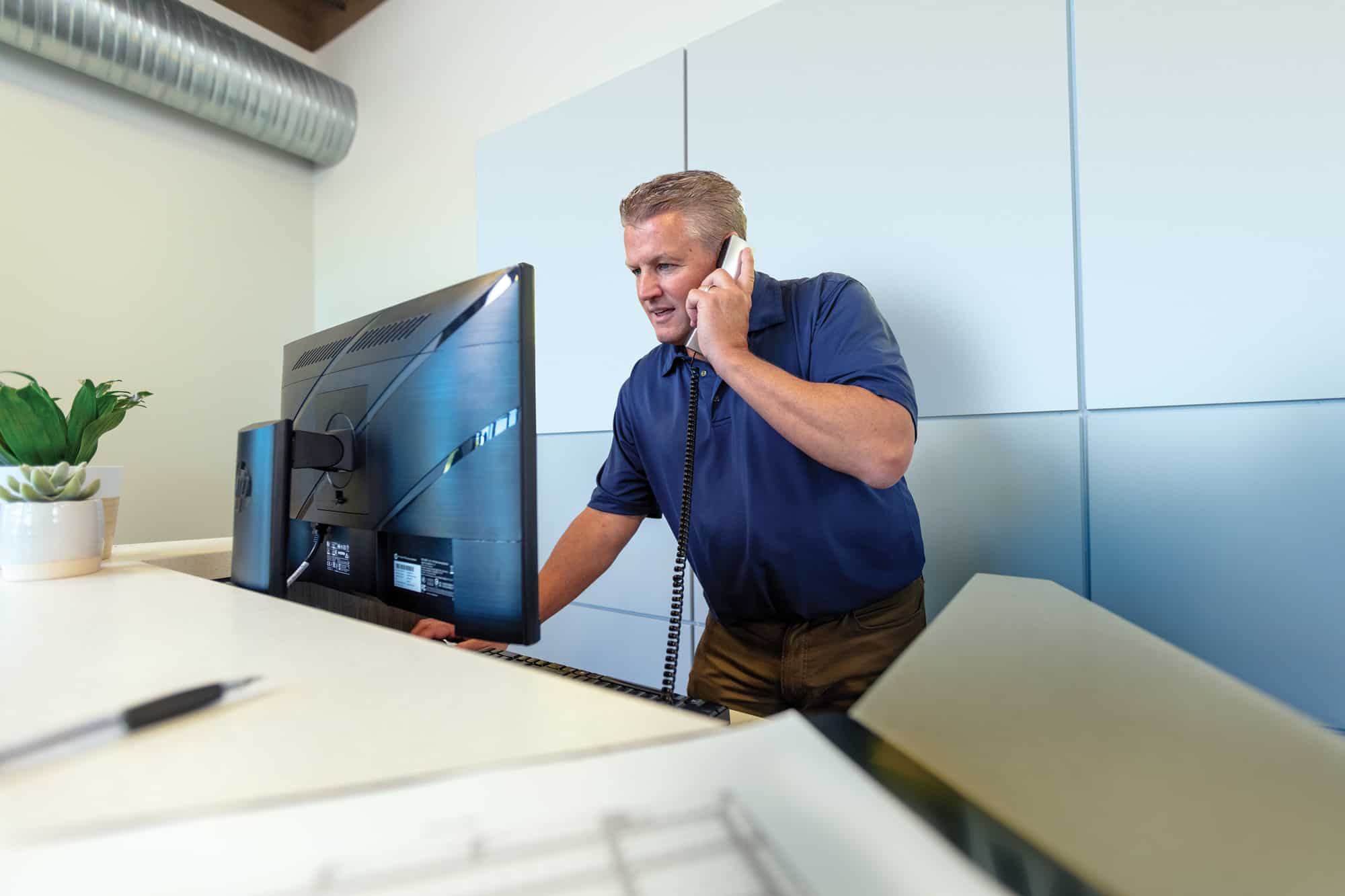A Deeper Dive Into Access Control Systems

If we go back to the beginning of the COVID 19 health crisis, self-storage operators around the world saw a massive surge in online usage. Quarantining, shutdowns and social distancing created the need for contactless experiences for many businesses, including the self-storage industry. This experience led to many storage operators implementing digital practices at their facilities for new and existing tenants.
Access control is not usually the first feature a self-storage facility implements. Often, it comes as an afterthought or is installed when an issue arises. However, as more of today’s consumers shift to digital and show a preference for contactless rentals, the need to implement an access control system at self-storage facilities becomes obvious. This guide is to show operators and self-storage owners the fundamentals of Access Control software and how it can benefit their facilities.
So, What is Access Control?
Simply put, access control in the self-storage world, is the system that controls the gates and entrances at a self-storage facility.
From the tenant’s perspective, it’s the keypad at the entrance that allows them to enter a secure facility. For the self-storage facility itself, an access control system includes keypad and gate hardware, a controller that connects to the internet and software to act as the ‘brains’ and power the hardware and controller. An access control system can increase the facility’s security and improve the tenant experience by making the storage facility accessible, even outside of traditional office hours.
How Does Access Control Work? Hardware vs Software.
There are different approaches to access control, which includes hardware-focused and software-focused systems.
Hardware-Based Access Control
More traditionally known, hardware-focused access control tools required an on-site computer. This computer actively runs the access control software and syncs your facility’s data via the internet from a gate controller to your facility management software. Hardware-focused systems often require a distinct configuration to work with each storage business. These systems are a good option for operators with unique needs, such as rural facilities that can’t get hard-wired internet access.
Hardware-focus systems also have the advantage of offering high-end new technology features. These include:
- Video access points
- Two-way intercoms
- Cellular connectivity
- Bluetooth access points
- Biometric access points.
If a high-end first impression is important to your facility, a hardware-focused access control system may be right for you.
Software-Based Access Control
These days, many access control systems are switching from hardware-focused to software-focused systems, also commonly referred to as cloud-based systems. Cloud-based access control does not require an onsite computer, making it more obtainable to operators that no longer need onsite offices, or just don’t have the space. A cloud-based access control software that embeds directly into your facility management software, focusing on utilizing the power of technology and automation to simplify your operations. While hardware-focused systems can fill the need for specific facility issues, software-focused systems are accessible and can simplify the internal operations for a majority of facilities.
One of the ways software-focused systems simplify internal operations is by embedding directly into your facility management software, creating real-time synchronization between your facility management and access control software. This real-time sync is important because access control determines who is entering your facility and who is restricted. New and paid tenants will have instant access to their storage units, while delinquent tenants and non-customers will not have entry to your facility.
Access Control: Hardware-Based vs Cloud-Based Systems, Which is Better?
Types of Gates & Access Points
Assessing the entry and exit points of your facility will help you determine where access control systems are needed. While many self-storage facilities have one way in and out, other facilities have multiple entry points.
Main Entrance
The main entrance is an access point that all facilities have. This is where tenants enter to access their units and often where new customers are entering if there is an onsite office.
Pedestrian Gate
A pedestrian gate is common in urban areas with high foot traffic. It allows tenants to enter on foot without going through the main vehicle entrance. This type of entrance is necessary if your onsite office is behind a gated vehicle entrance, so new customers can still come in.
Exit Gate
An exit gate works similar to the main entrance, however, instead of traffic flowing in, this gate is for leaving tenants. An exit gate is good for high traffic facilities, or facilities located on one-way streets. Having an exit gate will allow you to dictate the flow of traffic within your facility.
Snow Gate
If your facility is located in an area that experiences heavy or frequent snowfall, you may consider having a snow gate. This type of entrance allows room for a plow to enter and remove snow from a property. Having a separate gate for this from your main entrance allows snow to be removed without interfering with tenants or causing traffic jams.
Emergency Gate
Finally, emergency gates may be mandated depending on your local ordinances. Generally, these gates are for fire trucks and other emergency response vehicles. Access to this gate is often only given to facility management and local emergency personnel. A separate emergency gate allows for quicker response times in the event of an emergency.
Whether a facility has one main entrance or multiple, it’s important to access each place when looking into access control systems. Determine the traffic flow, daily use and security at each entry point. Use this information to decide if an automatic gate system is needed at each gate.
How Can Access Control Help?
There are many access control software options available and it’s important to look into what will work best at your facility. No matter what systems your facility uses, there are many operator outcomes that will benefit your facility with the use of an access control system.
Enhanced Operational Efficiency
Cloud-based software is accessible remotely. Meaning you can access your security gates from anywhere at any time. Need to let a repair truck in while you’re on vacation? No problem, just open the facility’s gate directly from your phone or create a one-time use entry code ahead of time.
Activity logs and other reporting that comes with gate access, allow you to make better-informed business decisions along with reports from your facility management software. By utilizing access control software and directly embedding it into your facility management software, you can enhance your operation’s efficiency through seamless workflows, informed decisions and remote access.
Optimal Tenant Experience
Between current technology trends and the global COVID-19 pandemic, tenants are shifting to digital now more than ever. In-person unit viewings are becoming a thing of the past. Many new customers expect the option to rent a storage unit directly online, without ever stepping foot into an office. With an access control system in place, the remote rental process can continue into a remote move-in process. Gate codes can be instantly issued for paid new tenants, meaning they never need to come into a physical office for access to your facility. This creates a better tenant experience that can translate into more positive reviews, rentals and revenue.
On the flip side, automated gate codes also mean there is an opportunity to restrict access when needed. With seamless integrations, delinquent tenants can be guided into making payments by having their entrance codes disabled until the tenant calls the office or makes a payment.
Looking Into The Future Of Access
Over the next couple of years, we expect to see continued investment in the cloud for self-storage technologies. Cloud-based software and systems will grow with this tenant shift to digital, as well as other technologies such as multi-factor authentications, security system integrations and the rise of ‘Smart’ facilities.
Now more than ever, keeping up with this shift to technology is important for self-storage businesses. An access control software can benefit your facility in many ways and acts as a great transition into this digital shift. It’s important to understand the needs of your facility, as well as your tenants and new customers. Ensure the access control product and other contactless experiences you use, fully meet the demand and requirements received from tenants and new customers.

Lock-It-Up Self Storage Modernizes Operations and Reduces Costs with storEDGE
Lock It Up Self Storage, an Ohio-based company with 17 locations, has been a trusted name in their local market for over 30 years. In their commitment to provide best-in-class service, Lock It Up recognized the need to modernize their operations to meet evolving customer expectations. Keep Reading

Why a Connected Website & Software Experience is Key to Reducing Errors and Improving Operations
By investing in integration, you’re not just saving time and preventing errors—you’re positioning your business as a trusted, professional operation that stands out from the competition. Keep Reading

How StoreEase Streamlined Facility Transitions and Scaled Operations with Storable
After evaluating multiple platforms in 2024, StoreEase deepened their partnership with Storable, citing our seamless onboarding process, project visibility, and streamlined data migration capabilities. Keep Reading